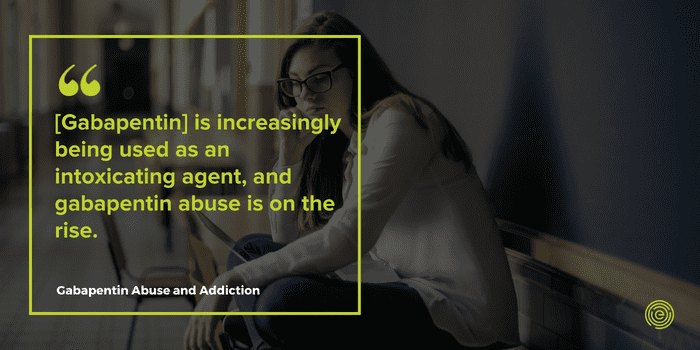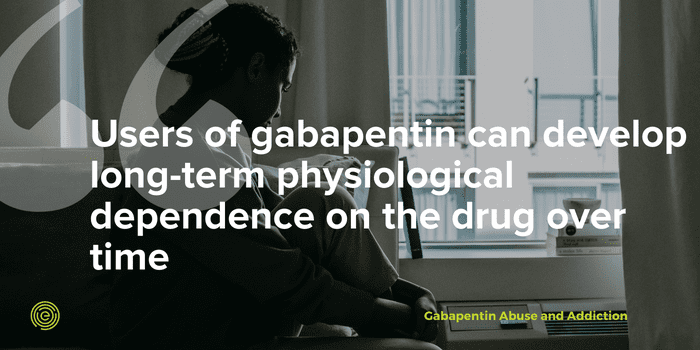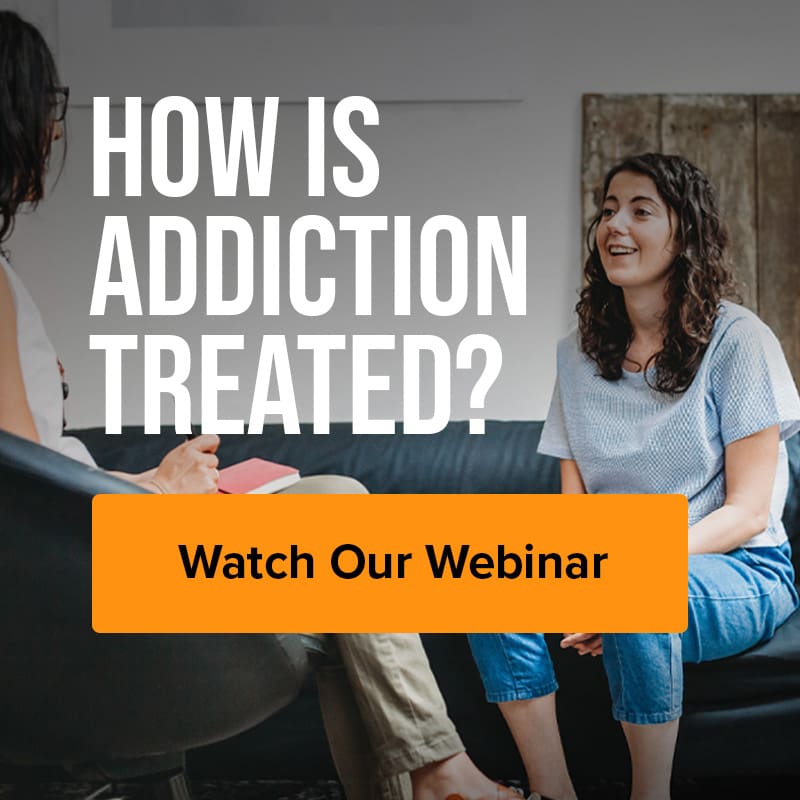What Is Gabapentin and how is it used?
Gabapentin is an analog of the neurotransmitter GABA, or gamma aminobutyric acid analog. It’s a medication for nerve pain that’s used to control seizures and relieve the nerve pain associated with nervous system conditions such as shingles and restless legs syndrome. It’s a type of anticonvulsant medication that mimics the effects of natural GABA in the body to control neurons in the brain when they become excited, and it’s also effective as a painkiller for certain types of pain.
Commercially, gabapentin is sold under the brand names Neurontin, Horizant, and Gralise. It’s also available as a generic drug, though as a prescription medication, not available over the counter. As Neurontin, gabapentin is sold in capsules ranging from 100 mg to 400 mg, and in tablet form, it’s available in doses ranging from 300 mg to 800 mg. The half-life of a standard 300 mg dose of gabapentin is 5–7 hours, meaning half the dose is excreted from the body at this time.
Neurontin and Gralise are approved for treatment of partial seizures, preventing and controlling these seizures in children 3 and over as well as in adults. Horizant is approved for treatment of moderate to severe restless legs syndrome that’s moderate to severe. All three brand-name medications are approved for treatment of postherpetic neuralgia (sometimes known as PHN), which is the nerve pain that follows resolution of a case of shingles, a painful rash that can occur in adults who experienced chickenpox as children.
Doctors also sometimes prescribe gabapentin off-label to relieve pain, numbness, and tingling resulting from diabetic neuropathy. It’s also prescribed to treat hot flashes in menopausal women and those being treated for breast cancer. Gabapentin may also be useful for the treatment of sleep problems, as it induces slow-wave sleep,
In addition, gabapentin is used off-label to treat alcoholism, specifically, symptoms of alcohol withdrawal and cravings. It can result in weight gain, since it induces appetite change as well as irritability. Gabapentin is also sold illicitly under the street names Gabbies or Johnnies, with a 300-milligram gabapentin pill selling for as little as 75 cents.
Side Effects of Gabapentin
The most commonly noted side effects of gabapentin are increased appetite and weight gain. Other common (and typically mild) side effects include:
- Nausea and/or vomiting
- Dizziness
- Recurring infections
- Blurred vision, double vision or unusual eye movement
- Dry mouth
- Headaches
- Fatigue or sleepiness
- Fever
- Difficulty speaking
- Difficulties with movement, including jerky movements or lack of coordination
- Diarrhea
- High blood pressure
If any of these problems don’t resolve on their own, you should check with a doctor. In addition, more serious side effects require immediate response from a health care provider. These can include:
- Suicidal thoughts, depression, anxiety, and feelings of aggression
- Memory problems and confusion
- Bluish tint to lips, nails, fingers, or toes, especially if paired with fatigue or muscle pain, or weakness
- Stomach pain that doesn’t resolve quickly (which can indicate an inflamed pancreas)
- Yellow skin or whites of the eyes, along with dark urine, vomiting, and light-colored stools (which can indicate liver problems)
- Difficulty urinating, blood in the urine, and swollen legs and feet (which can indicate kidney problems)
- Hallucinations
- Rash, hives, itching, blistered skin, difficulty breathing, difficulty swallowing, swollen face, throat, or tongue (which can indicate an allergic reaction
While these serious side effects are rare, they require immediate treatment by a doctor, and calling 911 may be in order.
Gabapentin Abuse

Gabapentin has not been labeled as a controlled substance in Canada, but it is increasingly being used as an intoxicating agent, and gabapentin abuse is on the rise. Some people use it to increase the effects of opioids, and it’s also used as a cutting agent for heroin.
In addition, snorting gabapentin like cocaine can produce a sense of euphoria and calm, making it attractive to drug users seeking a mild high. Snorting gabapentin also intensifies the use of other drugs, while simultaneously increasing the risk of overdose. Although the typical gabapentin dosage can vary greatly, it is possible to overdose on the drug, and no antidote is available for a gabapentin overdose.
Gabapentin Addiction
While gabapentin addiction is low, its addictive danger increases because of its use with other dangerous drugs, which means a person using gabapentin illicitly is likely to be fighting other drug addictions at the same time. In addition, withdrawal from gabapentin comes with pronounced symptoms, making it a drug that creates a real psychological dependence. Because gabapentin is one of the most-prescribed drugs in the United States, there’s a real possibility of damage and addiction when it’s paired with other drugs.
Symptoms of Gabapentin Addiction
Symptoms of gabapentin addiction may be difficult to unravel from the symptoms of the other drugs that a gabapentin user is likely to also be taking. However, some physical symptoms can point the observer toward gabapentin abuse, especially if several of these symptoms are co-occurring. These include:
- Lightheadedness or dizziness
- Shallow or slow breathing
- Bluish nails, lips, fingers, and toes
- Sleep problems, insomnia, or lethargy
- Unresponsiveness
- High blood pressure
- Fever
- Suicidal thoughts or extreme mood swings
- Appetite changes
- Chest pain
- Confusion and disorientation
- Unexplained weight gain
It’s important to remember that many people use gabapentin legitimately under a prescription as a treatment for a medical condition. Someone who’s abusing it may be either taking it to heighten the effect of other abused or illegal drugs, such as opioids or heroin, so you should keep an eye out for the symptoms of abuse of these far more addictive drugs. People who snort gabapentin for the feeling of euphoria delivered may also show evidence of sedation or calmness, disassociation and a sense of being high.
In addition, keep an eye out for behavioral clues that may indicate prescription drug addiction or abuse. These can include:
- Seeking multiple prescriptions for a drug from more than one doctor
- Difficulties at work or school
- Poor choices and decision-making
- Fear of losing access to the drug
- Stealing or forging prescriptions for the drug
- Taking higher doses than a doctor has prescribed
- Hostility toward discussions of the drug
- Requesting early refills of the drug or claiming a prescription or the drugs were lost
- Lying about symptoms
Signs of Gabapentin Overdose
While it’s possible to overdose on gabapentin, someone who’s using a relatively small dosage of gabapentin to cut a more dangerous drug, such as heroin, may show signs of overdose that are related to that other drug. It’s important to be aware of those overdose signs as well if someone has taken drugs and is not doing well.
Gabapentin overdosing can have effects on the heart, kidneys, and liver. Overdose also brings with it several recognizable signs. These can include:
- Slurred speech
- Lethargy, drowsiness, and difficulty staying awake
- Muscle weakness
- A blue tinge around the mouth, tongue, and fingertips
- Difficulty breathing or shallow breathing
- Abnormal heart rate
- Nausea and/or vomiting
- Diarrhea
- Extreme confusion
- Weak pulse and low blood pressure
- Blurred vision or double vision
- Loss of consciousness
Anyone experiencing these symptoms should be taken for emergency treatment immediately.
Gabapentin Withdrawal Symptoms

Users of gabapentin can develop long-term physiological dependence on the drug over time. That occurs when the brain gets used to having gabapentin present and functions in an unregulated manner if it doesn’t receive gabapentin. This dependence can occur even when someone is using gabapentin as prescribed. The misuse or abuse of gabapentin can result in even greater levels of physical dependence, with significant withdrawal symptoms.
Because gabapentin, alcohol, and benzodiazepine, such as Xanax or Valium, all act on GABA in the brain, their withdrawal symptoms can be similar. Withdrawal symptoms may be more or less intense depending on a person’s age, dosage, length of use, and co-occurrent use of other drugs.
Planned withdrawal should be phased out over about seven days. Withdrawal symptoms typically start within 12 to 48 hours of the last dose. During the first day, withdrawal symptoms can include sweating, heart palpitations, anxiety, headaches, and trembling. By the third day, other symptoms can set in, including restlessness, mental confusion and disorientation, hallucinations, fever, and agitation.
Toward day five of withdrawal, anxiety, and confusion continues to increase, and the person undergoing withdrawal may also experience sensitivity to light. In addition, those taking gabapentin to control seizures may start to experience uncontrollable seizures again in a very serious condition known as status epilecticus, which can be fatal.
Weaning off gabapentin typically involves tapering off dosages over a week or more to avoid these withdrawal symptoms. Withdrawal can occur when someone has been taking gabapentin for as brief a time as three weeks. Post-acute symptoms, sometimes including anxiety and depression, can occur in some cases. Anyone experiencing long-term symptoms should reach out to a psychiatrist or other doctor for medication that can help with post-acute withdrawal symptoms.
Treatment for Gabapentin Addiction
Your choice of treatment for gabapentin addiction depends largely on whether you are dealing with other substance abuse issues simultaneously. While in many cases it’s possible to deal with gabapentin addiction through tapering off use slowly, other substance addictions may make treatment more complex, requiring medical detox and rehab, possibly in an inpatient facility.
Gabapentin withdrawal is typically dealt with through tapering off the medication with the support of a doctor or addiction treatment facility. Because addictions can ruin your life, you should seek professional help if you are also trying to deal with other addictions. A comprehensive addiction treatment facility will combine detox with addiction counseling so you or your loved one can deal with the underlying causes and behaviors that led to the addiction in the first place. Mental health counseling provides additional help with strategies for handling cravings and triggers going forward.
Long-term addiction treatment of 90 days or more is proven most effective for those seeking extended sobriety. This kind of long-term program is likely to include education, behavioral therapy, life skills work, individual and group counseling, 12-step program work, and relapse strategies.
Seeking Professional Help
At EHN Canada, we provide a tranquil environment that helps facilitate treatment for gabapentin and other addictions. From inpatient programs, detox and withdrawal management to virtual intensive therapy programs and even online programs, we help you on your journey to healing and recovery. Our addiction counseling has been recognized as among the best in the country, with treatment options available from Nova Scotia to British Columbia.
Seek professional help by calling any one of our EHN Canada facilities:
You can contact us across all of Canada at our online number: 1-866-963-6343.
Make today the day you reach out for the help you need.




